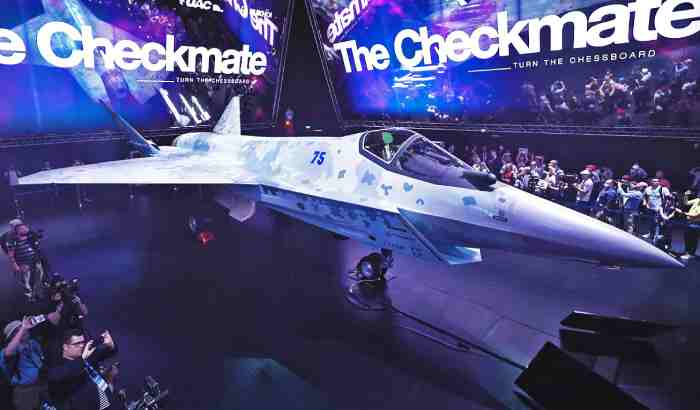
In short, on pylons externally or internally, Checkmate can carry almost all the weapons in the Russian arsenal, even the new generation ones developed to be housed in the internal bays of the Sukhoi Su-57 Felon.įinally, the fighter has a cannon, possibly the same as the 30mm Su-57, located in a pod that is housed within one of the lateral bays. In air-to-surface functions, the point under the fuselage can house bulky weapons such as the Kh-59Mk2 cruise missile, modular Grom-type guided bombs (or missile, in its engined version) or the Kh-58UShKE long-range anti-radar missile. In the central bay, inherited from the one developed for the Su-57 Felon, 3 of the new Vympel R-77M medium / long-range air-to-air missiles can be accommodated for air-to-air missions. Short-range air-to-air missiles of the Vympel R-73/74 family or future developments can be housed in the side pylons. A good part of it can be located inside the internal weapon bays, of which the Checkmate has 3, two of them lateral and one under the fuselage. Its combat radius, depending on the configuration, could be in the order of 1,000 to 1,500 km. Its clean range (without extra fuel tanks) is advertised in the order of 2,800 km.

Its maximum speed is set at 1.8 Mach, and during the presentation it was reported that the fighter is capable of maintaining a continuous supersonic flight regime, perhaps a different way of saying that it has the ability to “supercruise”, that is, to be able to fly at more than Mach 1 without the use of afterburner. Thanks to its excellent thrust-to-weight ratio (close to or better than 1:1), its aerodynamics, and the vector thrust of its nozzle, the Checkmate can take off and land in short distances, can perform 8G maneuvers, and can develop excellent acceleration performances. The new fighter incorporates artificial intelligence (AI), which permanently runs diagnostics of the aircraft and informs the pilot of the condition of the systems, even giving the OK for takeoff. It was also stated that the Checkmate will have low fuel consumption, being of lightweight construction, with a refined aerodynamic design, and being equipped with the future Su-57 final engine, the Izdeliye 30, more powerful and economical than the current Russian generation of aviation engines. It will have an advanced computerized failure prediction and logistics management system, which will lower the life cycle costs of each fighter. To facilitate these tasks, the aircraft is equipped with an auxiliary power unit, which reduces the requirement of having equipment on the ground to turn on the electrical systems, before the main engine is put into operation.ĭesigned to be easy to maintain, it requires few technical personnel or specialized ground equipment to prepare the Checkmate for a mission while maintaining high operational availability, even in high-intensity scenarios.


The new fighter will be capable of combat deployments in advanced areas, in poorly prepared airfields, under any weather conditions.
#Sukhoi checkmate cockpit software
Thanks to its open software architecture, the aircraft has great potential for modernization and would allow future customers to integrate different types of electronic equipment and weapons (perhaps even foreign ones) according to their operational needs and available budget. It also incorporates operational lessons learned from Russian force deployments in Syria and other recent conflict areas. Designed and digitally tested through the use of supercomputers, the Checkmate is designed to be effective and with a contained purchase and operation cost. As explained during the presentation, Checkmate is a project for a new generation multi-role light combat aircraft, which incorporates advanced technical solutions but adapted from technologies already developed for aircraft such as the Su-57 Felon or the MiG-35 Fulcrum.


 0 kommentar(er)
0 kommentar(er)
